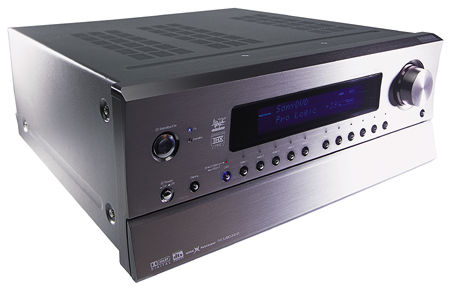Integra Research RDC-7 Preamplifier-Processor

The firmware updates and circuitry architecture that facilitate upgrades such as those promised by Integra Research have become more common in the past few years, but they've typically been limited to super high-end products. Could the Integra Research really be as future-proof as the flagship products from such companies as Mark Levinson, Lexicon, Meridian, Proceed, and Theta? After more than 20 years in this crazy industry, I've learned that most marketing promises resemble election-campaign fodder—easy to say in the heat of the moment, conveniently forgotten later.
I'm happy to report that Integra Research has actually delivered. A few months after my original review in 2001, Integra Research announced an upgrade to the RDC-7 that added DTS-ES and Dolby Pro Logic II. In 2002, the RDC-7 was updated again to comply with the new THX Ultra2 specifications and add DTS's 96/24 movie and music surround algorithms. With this second upgrade, Integra Research bumped the retail price of the RDC-7 from $4000 to $4500. You can add both these enhancements to earlier units for $500.
The original version of the RDC-7 was THX Ultra–approved and had all the then-available bells and whistles, including Dolby Digital (with THX EX), DTS, Dolby Pro Logic, and full 7.1-channel capability. Also featured were balanced and unbalanced outputs, component-video switching, ample analog and digital inputs (including an AC-3 RF input for Dolby Digital laserdiscs and a 7.1-channel pass-through input for multichannel DVD-Audio and SACD), and digital upsampling of PCM signals. For the full rundown, I recommend that you read or re-read that review, available online at www.guidetohometheater.com/showarchives.cgi?8. Here, I'll discuss some of the updates, plus a few items there wasn't space to cover last time. I won't get into the Integra's fundamental sound quality, which was—and remains—excellent.
Magic Number 7
I admit that I am a multiphile—a dyed-in-the-wool surround-sound junkie. Ever since a Dolby Laboratories tour that Tom Norton and I took in San Francisco just before the original review was written, I'd been eager to hear what the new Pro Logic II could do for my collection of 2-channel recordings. Of course, Pro Logic II can improve the playback of Dolby Surround movies (i.e., all those older soundtracks that don't have a discrete Dolby Digital 5.1-channel mix). But unlike the original Pro Logic, Dolby also recommends PLII for generating a simulated surround-sound experience from 2-channel music recordings.
As it turns out, I'd gladly pay the $4500 price of the Integra Research for the musically enveloping enjoyment I got from it with my 2-channel CDs in Pro Logic II. Not only did I rescue many of my old classic-rock CDs from the car, but I had to repurchase so many of those worn and scratched discs that the guy at Barnes & Noble must have thought I was suffering a midlife crisis.
Integra Research accommodates the move to 7.1-channel sound by allowing the rear-channel information to be shared by two pairs of surround speakers. This works with Pro Logic II, Dolby Digital, and DTS using THX Ultra2's proprietary CinemaMode processing. I'm a big fan of monopole (i.e., conventional front-radiating) speakers in a two-pair surround array—as long as the room is large enough. They allow a system to be more flexible for both movie and music surround, and CinemaMode processing creates a complete surround envelope from the extra rears.
The RDC-7 lets you choose whether the side or rear surrounds (or both) are used, though the option is buried deep in the setup menu. It would also be nice if the rear surrounds were easier to engage or disengage, since some material benefits from a mere extension of the front stage, allowing the performers to occupy a bit more of the front part of the room. Using only the side surround speakers permitted this illusion, especially when I moved the main seat back a few feet. Other heavily mixed studio music, such as the Pink Floyd's classic Dark Side of the Moon (original CD, Capitol 46001; remastered, Mobile Fidelity UDCD 517, not the new SACD discrete multichannel version), screams for all four rear speakers to make a complete wraparound effect.
Buried Buttons
Since parting with our review sample of the original RDC-7, I've built up a collection of DVD-Audio discs, so the multichannel analog pass-through input is now far more important to me than before. I nearly lost my mind when that input wouldn't work on the new unit. I configured the setup menu as before, but each time I switched to the corresponding input, it wouldn't play.
- Log in or register to post comments




















































